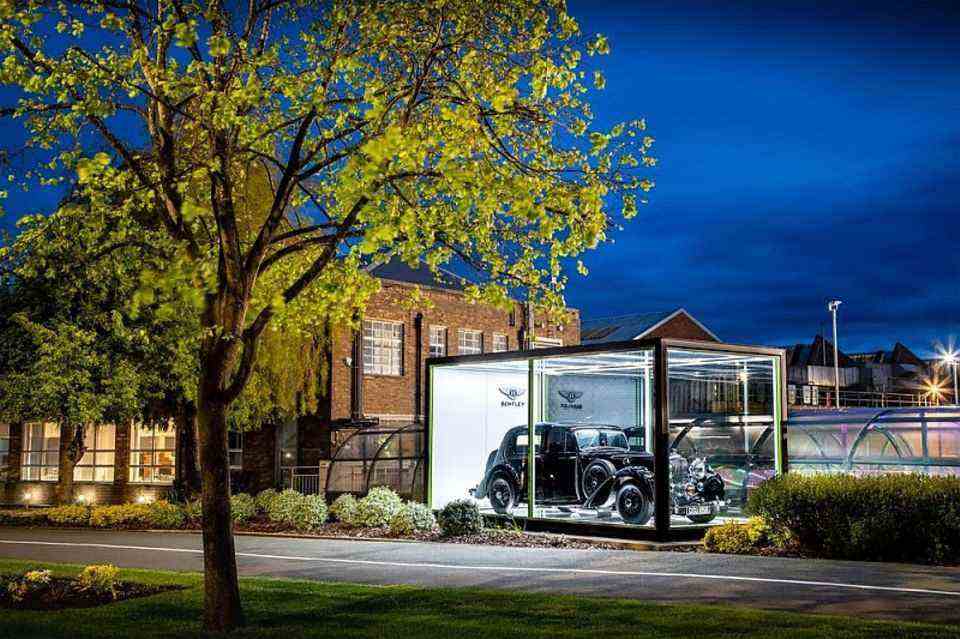Bentley’s sustainability strategy
dream factory
The main factory in Crewe is redesigned
© press-inform – the press office
This year heralds a new era for Bentley. Instead of Porsche, the British luxury brand is now forming a brand association with Audi, Lamborghini and Ducati. Nevertheless, the Heimwerk Crewe remains the nucleus for electromobility.
From the first of January, what has long been clear will be official. Bentley together with Ducati belongs to the Audi Group. So Ingolstadt instead of Zuffenhausen, four rings instead of Porsche. This also changes a lot, while Audi is sticking to the former Artemis lighthouse project, the sporty Swabians are pulling the plug. It crunches and creaks in the VW group beams. The idea of joining forces to provide Tesla fails because of the interests of the individual brands and their customers. The Artemis lighthouse has now become a technology shared flat in the Audi building. The unconditional centralism from Wolfsburg has given way to self-determination, since the individual brands know best what is successful in their countries and how they can best serve the zeitgeist.
Bentley is using the freedom and expanding the home factory in Crewe into the central production facility, where the first all-electric model of the British luxury brand will be produced from 2025. Through the alliance with Audi, Bentley uses the Premium Platform Electric (PPE). In the future, luxury will not only mean fine leather and rare woods, but sustainability. For the British, it’s not a mess, it’s a big thing. In the next ten years, Bentley will spend 2.5 billion British pounds (almost three billion euros) and expand its production facility into a “dream factory”.
This groundbreaking manufacturing facility aims to “make Bentley the future benchmark for luxury car manufacturing,” Bentley says. By 2030, Bentley wants to achieve complete carbon neutrality and combine modern digital concepts with classic craftsmanship in the manufacture of the cars in an extremely flexible production line. With the “go-to-zero” manufacturing approach, the environmental impact of every car produced in the main plant should be reduced to a minimum. This is how it is enshrined in the Beyond100 strategy. “With our new concept of the dream factory, we now want to reduce water consumption, waste and other environmental pollution to zero by 2030,” explains Bentley Board Member for Production Peter Bosch.
In order to achieve this ambitious goal, Bentley has put together an extensive package of measures in which literally no stone is left unturned. As specified by the parent company VW, this also applies to the suppliers who are committed to climate neutrality. A central component of this dream factory is the self-sufficient energy supply from renewable sources. For this reason, Bentley will install 10,000 more solar cells over the next two years, increasing the number of solar power donors to 40,000.
The British want to launch an all-electric model every year from 2025. As a further mainstay of production, Bentley apparently has Leipzig and Porsche in its sights, but not Hanover and VW. Rumors are already circulating about the first electric Bentley, the sister model of the Audi Landjet, apparently it will be a long-legged vehicle. In addition to a large battery with a capacity of more than 100 kilowatt hours, promising a range well beyond 600 kilometers, the British should also conquer the e-luxury segment with reasonable power. That means 800 to 1,000 hp. The “Bentley EXP 100 GT concept car” study shows where the journey is headed. If you can believe the statements made by Bentley boss Adrian Hallmark, the premiere electric car will not be a classic SUV in the style of a Bentayga, but rather a sleek representative of the guild.


